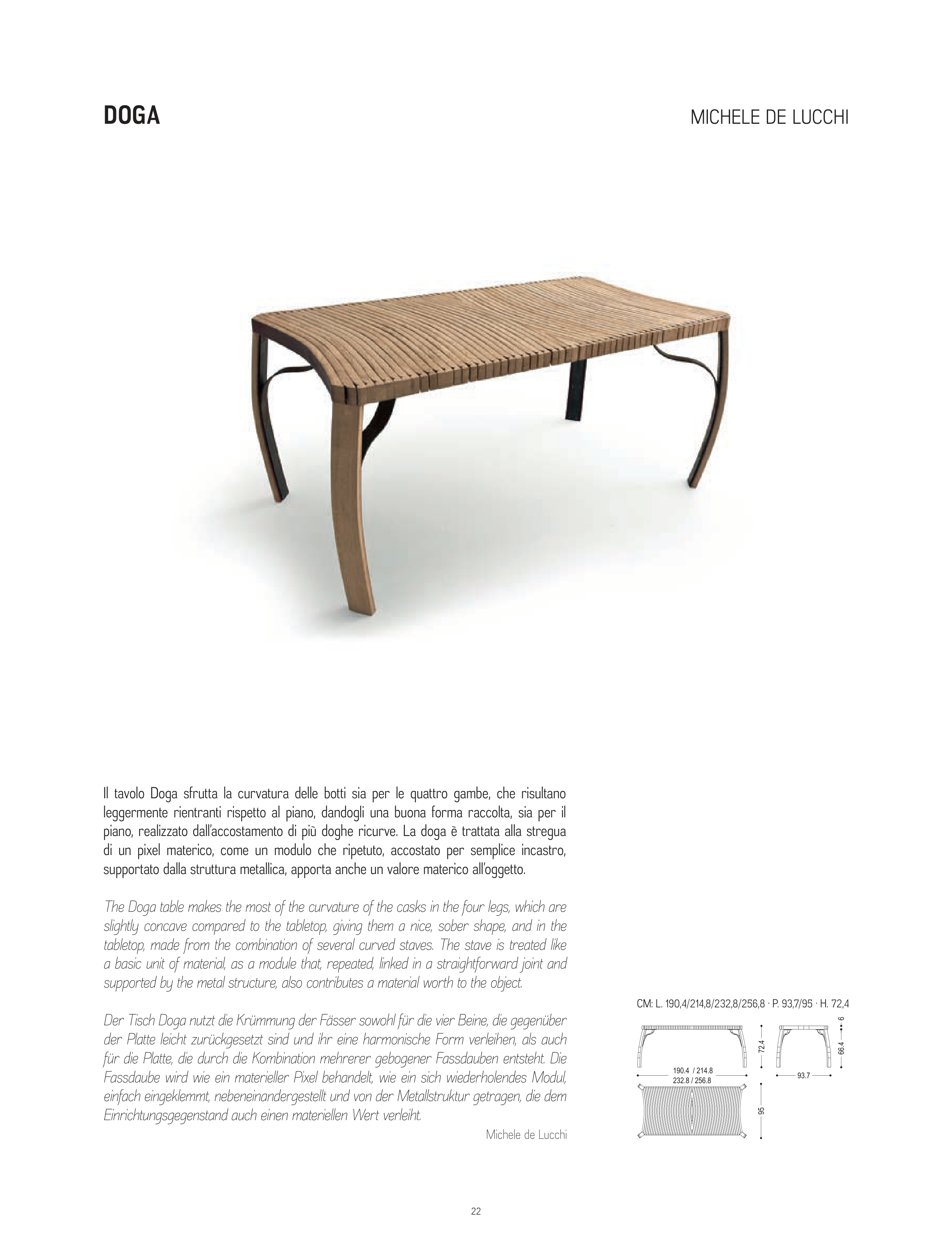22
DOGA
MICHELE DE LUCCHI
190.4 / 214.8
232.8 / 256.8
72.4
66.4
6
95
93.7
CM: L. 190,4/214,8/232,8/256,8 · P. 93,7/95 · H. 72,4
Il tavolo Doga sfrutta la curvatura delle botti sia per le quattro gambe, che risultano
leggermente rientranti rispetto al piano, dandogli una buona forma raccolta, sia per il
piano, realizzato dall’accostamento di più doghe ricurve. La doga è trattata alla stregua
di un pixel materico, come un modulo che ripetuto, accostato per semplice incastro,
supportato dalla struttura metallica, apporta anche un valore materico all’oggetto.
The Doga table makes the most of the curvature of the casks in the four legs, which are
slightly concave compared to the tabletop, giving them a nice, sober shape, and in the
tabletop, made from the combination of several curved staves. The stave is treated like
a basic unit of material, as a module that, repeated, linked in a straightforward joint and
supported by the metal structure, also contributes a material worth to the object.
Der Tisch Doga nutzt die Krümmung der Fässer sowohl für die vier Beine, die gegenüber
der Platte leicht zurückgesetzt sind und ihr eine harmonische Form verleihen, als auch
für die Platte, die durch die Kombination mehrerer gebogener Fassdauben entsteht. Die
Fassdaube wird wie ein materieller Pixel behandelt, wie ein sich wiederholendes Modul,
einfach eingeklemmt, nebeneinandergestellt und von der Metallstruktur getragen, die dem
Einrichtungsgegenstand auch einen materiellen Wert verleiht.
Michele de Lucchi







